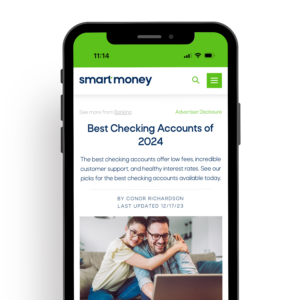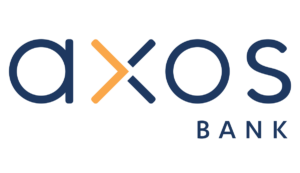Some of the links in this article are from advertising partners of Smart Money, which does not influence our evaluations or recommendations. We work to provide you with accurate and reliable information. Our opinions are our own.
Most budgets start the process by focusing on expenses. Money that is left over is then allocated to other financial goals. The pay-yourself-first budget flips the traditional model on its head, emphasizing your savings first over your expenses.
Before exploring the pay-yourself-first budgeting system, it’s important to remember why you should budget in the first place. In short, budgeting helps you reach your financial goals fast.
What is Budgeting?
At its core, budgeting is allocating your after-tax income to your financial goals and necessities. Most budgets are created monthly, with regular check-in times semi-annually or annually. Your budget acts as a homing device for all your financial decisions.
Your budget considers all sources of income and expenses throughout the month, acting as a financial roadmap, and providing you with financial guardrails to help you consistently achieve your financial goals.
Learn More -> Budgeting 101: How to Create a Budget in 7 Steps
You can think of a budget as your business plan. Budgeting helps you navigate essential monthly expenses like paying for rent and groceries, allocate funds for paying off debt or saving for an emergency fund, and meet long-term savings goals. There are many budgeting strategies, each with its own view on how you should prioritize your money.
If you want to ensure your savings goals are met, then you might like the pay-yourself-first budgeting method.
What is the Pay-Yourself-First Budgeting Method?
The Pay-yourself-first budgeting method is a method of budgeting that advocates that you build your budgeting process around achieving major savings goals. This means that you aim toward saving a certain amount, say $500, each month. After your saving goal has been met then, and only then, you start allocating expenses to fixed costs and variable costs.
If you are trying to save for any one of the below savings goals, the Pay-yourself-first budgeting method could be a perfect fit for you:
George Clason, the author of The Richest Man in Babylon, made the idea of paying yourself first incredibly popular as one of the core tenets for building and preserving wealth. This idea has become very powerful if you are looking to accelerate your savings and net worth. Paying yourself first is one of the core ideas for those in the Financial Independence Retire Early, or FIRE, movement. While you don’t have to take it to the extreme, The Pay-yourself-first budgeting method can help you reframe how you approach budgeting and saving.
Get Smart With Your Money
Fresh weekly articles delivered straight to your inbox.
Enter your name and email for free tips and tricks.

How Pay-Yourself-First Budgeting Works
Implementing the pay-yourself-first budgeting system is easy and fast. Here are five steps to follow to start today:
Step 1. Determine Your Savings Goal
Your savings goals should tie to your long-term financial plan. Financial planning is a major part of understanding what you want your life to look like and then designing your finances to help you achieve life goals. The first step in your pay-yourself-first budget is to determine what savings goal you want to reach first.
Saving goals can range from beginning an emergency fund to saving for retirement. Personal finance experts highly recommend ensuring you have a healthy financial cushion before moving on to other savings goals like going on a major vacation or saving for a down payment for your first home.
Get Smart -> 7 Financial Goals That Will Change Your Life
Let’s say you are focused on saving for retirement and your goal this year is to maximize contributions to your Roth IRA. For the tax year 2023, the maximum contribution to a Roth IRA is $6,500. If your paycheck comes twice a month, you have 24 paychecks to allocate your savings to your Roth. If you want to fill up your Roth IRA in one year you only need to save $270 per paycheck. Want to accelerate the process? Save $542 per paycheck.
How you calibrate your monthly, quarterly, or annual savings is determined by your goal.

Member FDIC
Axos Bank® Rewards Checking
Smart Money Rating: 5/5
APY: 3.30% with No Minimum Balance
Bonus Offer: Up to $300 Bonus (Terms Apply)
Step 2. Review Past Spending
When it comes to savings, more is not always better. Before leaping into this budgeting system you want to ensure you can afford to pay yourself first. This means you should analyze your past spending to make your budget successful.
Fortunately, the math for a budget is very simple. For this part of the process, you want to review your past spending and categorize your expenses. Review your last several credit card and bank statements. This might seem tedious, but it will help you allocate your spending into buckets of fixed costs and variable costs.
If you spend more than you make, you need to adjust your spending. To save, you need money left over at the end of the month. Think about cutting costs in under-the-radar areas like subscriptions and non-essential purchases.
Smart Money -> 14 Wacky Ways to Cut Expenses
Income
(Expenses)
Profit
Once you create a budget where you are not spending more than you make, you can begin paying yourself first. The next task is to increase your income to accelerate your savings success.
Step 3. Analyze and Boost Income
One of the fastest ways to meet your savings goals is to earn more income. If you operate on a corporate salary, consider asking for a raise or looking for a new position that pays more. By earning more money, you will have more cash flow to attack your savings goals.
Making more money is sometimes not as easy as it sounds, but it has never been easier to make money online. You can start an online business and boost your income drastically, freeing up your budget to save or spend more. Consider starting a side hustle like driving for Uber or Lyft or renting out your car.
Step 4. Monitor Progress
Regularly monitoring your savings goals is always a good idea. Take time to check in on your process with a quarterly review and reflection meeting. You should analyze if you adhered to your savings goal.
Ask yourself these questions during your review and reflection: Were there times you didn’t pay yourself first? Did you automate your savings? Was your savings goal too big/small? Do you need to change your savings goal?
Adjusting your savings goal is part of the process. If you meet your saving goal early, move on to the next one. Try to stay focused and tackle savings goals one at a time. You will inject focus and intentionality into your savings process by focusing on one goal.
Step 5. Automate Finances
One of the fastest ways to improve your finances is to automate your financial ecosystem. This may sound grandiose at first, but it is very easy to implement. In the long run, automating your finances helps you achieve your short and long-term goals because it removes decision fatigue.
Smart Money -> Best High-Yield Savings Accounts
Decision fatigue is the idea that we are inundated with decisions all day long, by removing the number of decisions we can focus on the quality of financial decisions. Decide you are going to automate your finances once. That is a huge financial decision with cascading benefits. Once you implement your automated ecosystem all you must do is tinker with your allocations to meet new goals.
Advantages of Paying Yourself First
Easy to Start: One of the main advantages of the pay-yourself-first system is that (relative to other budgeting strategies) it is very straightforward to implement. Unlike some budgeting systems like the envelop budgeting system, it doesn’t require taking out cash or maliciously categorizing your expenses.
Prioritizes Saving: The fastest path to financial freedom is paying off your debt and saving. The pay-yourself-first budgeting system is focused on putting more of your money back into your pocket. Increasing your savings makes you feel more confident and will allow you to distance yourself from unfortunate financial circumstances. More savings provide you the flexibility to start your own business, search for your dream job, or travel the world.
Automation: Once you set your saving target, the pay-yourself-first budgeting system is essentially a “set it and forget it” system. After you have paid yourself, you can spend the rest of your monthly after-tax income on whatever you want.
For the reasons listed above the pay-yourself-first system is one of our favorite budgeting systems. However, no budgeting system is without limitations.
Disadvantages of Paying Yourself First
Sometimes saving can be a luxury. If you need to pay off debt, putting as much money toward this goal is a smarter money move than hoarding cash. If you have debt, you can still use the pay-yourself-first system but instead of paying yourself, you can allocate cash to paying off your debt.
Other budget strategies like the 50/30/20 budget can also help you get to the point of being able to implement the pay-yourself-first model.
Other Budgeting Methods
If the pay-yourself-first system does not work for you, don’t panic. Your savings goals are not dead. Other highly effective budgeting strategies help millions of people meet their financial goals. Below are some of our favorite budgeting systems:
The pay-yourself-first budgeting system can strain your finances if you are over-saving. This budget evangelizes saving money at the start of the month, but if you have high fixed costs or a heavy debt load, you may need to prioritize other financial goals. Paying off your debts will free up your monthly cash flow allowing you to focus on meeting your savings goals.
Mega savers love the pay-yourself-first budgeting system because it gives them an immediate sense of goal achievement. By automating your finances, you can relieve decision fatigue and enjoy the process even more.
Let’s be honest, this budgeting system might be a perfect fit to help you meet your savings goals. Flipping the traditional mantra of focusing on your expenses first and then saving is a refreshing approach for many people. It could be right for you too. Above all, you want to pick a budgeting framework that works for you.
What is the Best Budgeting Method?
At Smart Money, we don’t recommend one budget over the rest. Instead, find a budgeting system that works for you. If you are at the stage where you are prioritizing saving for an emergency fund, slush fund, down payment, investing, or retirement then the pay-yourself-first budget slides right into your wheelhouse. Other budgets, like the envelop budgeting system, might help you tightly manage your money.
There is no magic bullet. Experiment with different types of budgeting systems and spending allocations. Eventually, you will find a budget that suits your personality. When you do, lean in.
Smart Summary
Ready to start saving? The pay-yourself-first budgeting system is a high-octane savings system that can boost your savings quickly. This easy-to-manage budgeting system is virtually hassle-free. Start saving more today by implementing your pay-yourself-first budgeting system.











